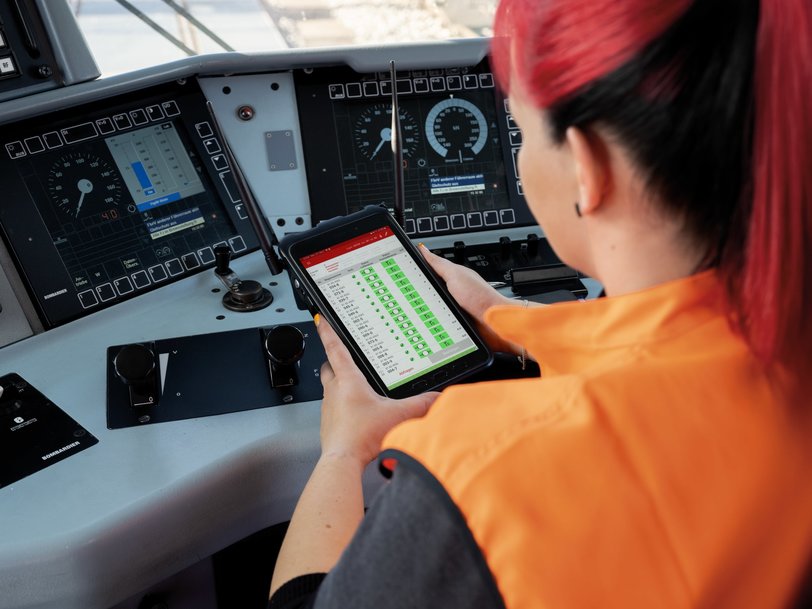railway-international.com
30
'23
Written on Modified on
SBB Cargo receives type approval for automatic brake test
SBB Cargo has reached an important milestone in the automation and digitalisation of railway freight traffic in Europe: the Federal Office of Transport has granted type approval for the automatic brake test.

The automatic brake test is a procedure that automatically measures the braking status of freight wagons in real time. The data is displayed on a tablet for the locomotive crew or shunting specialist. This means that the brake test can also be carried out from the engine driver’s cab.
There is no need to walk around the train. The automatic brake test meets all safety requirements and is the reference system for automatic brake tests on freight wagons in Europe. “The automatic brake test is a very important step for SBB Cargo in making train preparation safer and faster. After eight years of intensive project work, we have for the first time fully digitised and automated an operating process. In doing so, we have gained important experience for the further digitalisation of railway freight traffic and we are also bringing this experience to the European project for digital automatic coupling,” says Jasmin Bigdon, Member of the Management Board of SBB Cargo and Head of Asset Management.
Automatic brake test saves time and increases safety
The automatic brake test saves a lot of time compared to the manual brake test: for a 500-metre-long train, the brake test now only takes around five minutes. When doing the manual brake test, the shunting specialist has to walk around the entire train and that takes a good 40 minutes if the train is several hundred metres long. The time saved means greater productivity and flexibility for freight traffic. It also increases the safety of employees, as they have to spend less time in the track area. “The automatic brake test is groundbreaking for future railway transport. A 100-year-old method has been fully automated for the first time. The system has been tried and tested and approved. It is now available for widespread use. As the system is also compatible with future DAC technology, the way is paved for an immediate roll-out,” says Günter Petschnig, CEO of PJM.
200 freight wagons already equipped with automatic braketest system
The automatic brake test is an innovation of the development consortium comprising SBB Cargo,PJM and Rail Cargo Austria (RCG). SBB Cargo drove the development all the way through to type approval. Today, almost 200 SBB Cargo wagons have already been fitted with the automatic brake test system.
Roll-out planned for 2024
The operational testing of the automatic brake test will last at least three months and will be carried out at selected locations. Following successful operational testing, the automatic brake test will be rolled out to other transport operations in 2024. This is one way in which SBB Cargo is making an important contribution to the automation and digitalisation of railway freight traffic in Europe.
www.pjm.co.at

